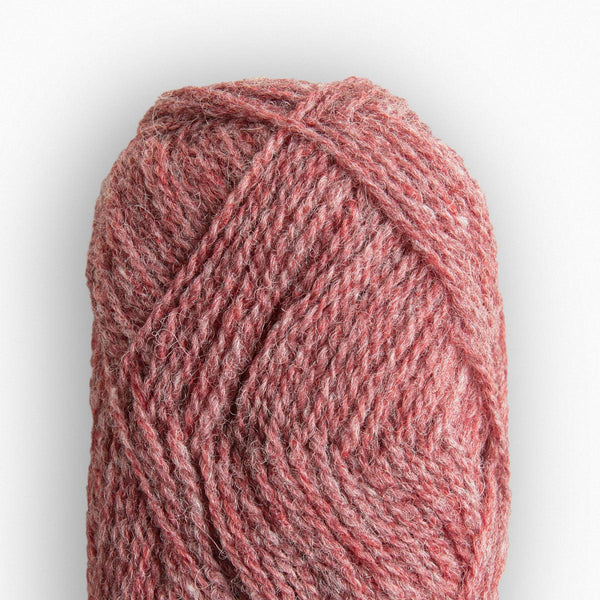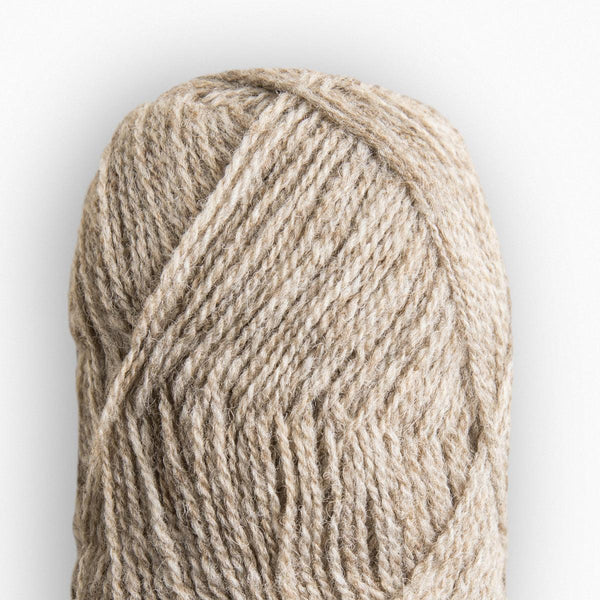Meet the Maker: Jamieson and Smith
Jamieson and Smith are known for their sturdy, Shetland-grown yarns perfect for Shetland Lace and Fair Isle projects. Founded in the 1930s, this longstanding wool institution purchases local wool from over 700 crofters and farmers from all over the islands to create their various wool products—including yarns, knitwear, blankets, and carpets. Jaime and Amber toured the J&S facility in Lerwick when they were researching their new book, Wool Journey: Shetland, and J&S was kind enough to spend a little more time with us today talking about their company and their yarns.

How long have you been making Shetland Yarn?
Jamieson & Smith have been in business since the 1950s but our founder, John Smith, began brokering wool in Shetland in the 1930s. In the late 1960s we began producing yarn—2ply Jumper Weight in shade 202 Light Fawn—which is still one of our best sellers today!

Tell us a little bit about the history of the Shetland sheep and how they have evolved over the years?
The Native Shetland sheep are part of the North European short-tailed breeds and have been linked to breeds such as Icelandic, Finn, and Romanov; and Scandinavian breeds’ such as the Spaelsau. It is the smallest of the British sheep breeds and it maintains many of the characteristics of the wild sheep. In one of the first surveys carried out on Shetland sheep in 1790 (published 1814) for the Board of Agriculture, reporter John Shirreff states there are two distinct types of sheep in Shetland—one breed producing a ‘kindly’ (meaning fine wool) fleece, and the other a much coarser fleece. It was natural that these two distinct types would cross breed and produce wool of which could be of mixed quality, and the same applies to this day, hence the need for careful breed selection of fine woolled stock and later on the hand-sorting of fleece.

You are currently working to revive the natural wool shades of your yarn that fell out of fashion. What is that process like and what inspired you to start?
We began with the Shetland 2000 yarns which is a range of totally undyed natural Jumper Weight yarns, this came about as the owners of Yarns International—a yarn shop in the USA since closed and one of our early stockists—were shocked at how much of the natural colours were not being used. Traditionally the white wool was what people wanted as it could be dyed, and historically some of the natural shades were even thrown away as they couldn’t be dyed. Since then we have introduced a range of totally natural 1 and 2ply lace as well as the Shetland Heritage Naturals. In this way we are giving value to the rarer coloured wools and keeping them as a special product. We also sell a selection of combed tops in the natural shades for spinning and felting which is perfect for those not wanting to wash raw fleece themselves.

What is your relationship like with local farmers? Do work directly with them and buy from them?
Yes, we do. Every day during the summer months, and most days during the rest of the year you will see crofters and farmers pulling up at the green doors with their wool. It is then weighed in and later hand-sorted and graded by Oliver, Derek, and Jan in the woolstore. Our relationship with the local crofters and farmers is of an extremely high importance to us and we pride ourselves on paying them quickly and fairly.

In what ways to you promote traditional knitting practices in Shetland and around the world?
We are extremely passionate about our traditional skills and techniques, and we make sure we sell everything anyone needs for Shetland knitting like patterns, yarns, needles, knitting belts, books, etc! We also write blogs about what’s happening at J&S so our customers all over the world can be connected to us in Shetland.

What do you think makes Jamieson and Smith so special?
The yarn is very special due to the wool itself, the weather and landscape all make Shetland wool what it is. Jamieson & Smith as a place is special thanks to those who work here and our customers, we all have an interest in what we do here—we are crofters, designers, knitters, and weavers who are interested in our heritage and culture.

What does an average day look like at J+S and does it change seasonally?
Yes, it changes a lot depending on the time of year. In the summer we are extremely busy with farmers and crofters coming in with the wool, and we also have a lot of tour groups which come in the summer months, so the shop can be really busy too! In September and October, we also have Shetland Wool Week which is by far our busiest week in the shop.

How much of the Shetland wool goes into your handknitting yarns, and what other products are made from the fleeces?
A large portion of the wool goes into yarn but it also goes into products such as knitwear, blankets, rugs, and carpets. It's important to us to give time to the rougher grades of wool which can’t go into yarn but can be used for other things—this means we are furthering the value of the Shetland clip which is one of our main goals.
Click here to shop Jamieson and Smith yarns at Fancy Tiger Crafts. All photos courtesy Jamieson and Smith.




Leave a comment